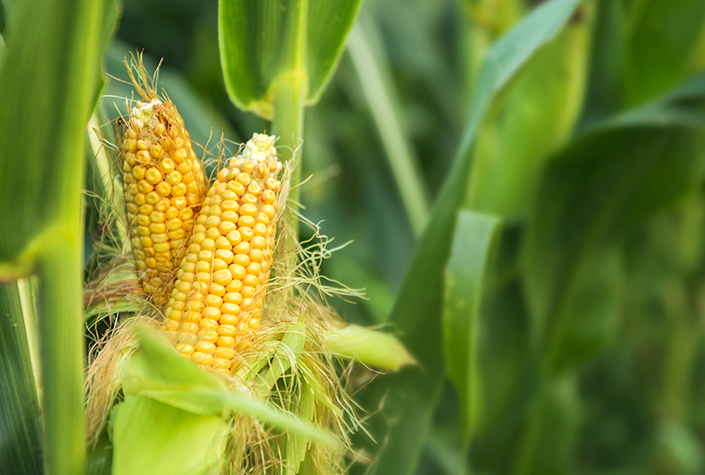Resisting pests: Modern corn gets boost from ancestor’s microbes

Texas A&M AgriLife scientists are working to enhance corn’s resistance to insects such as fall armyworm by transplanting beneficial microbes found in corn’s resilient ancestor, teosinte.
The work is urgently needed because fall armyworm, western corn rootworm and other insects are becoming increasingly impervious to existing control methods. Corn is among the most planted and essential crops around the world. In the United States alone, western corn rootworm causes more than $1 billion in damage to corn crops each year. Insects’ resistance to pesticides can lead to ramped-up pesticide use, which can create environmental problems.
By focusing on beneficial microbes from teosinte, the Texas A&M AgriLife research team aims to create an environmentally friendly insect control method specifically suited to corn.
The research was funded this summer by a $199,892 grant from the U.S. Department of Agriculture National Institute of Food and Agriculture. The grant builds on a seed grant from the Collaborative Research Grant Program of Texas A&M University and the Consejo Nacional de Ciencia y Tecnología, a Mexican government agency.
Leading the project is Julio Bernal, professor, Texas A&M College of Agriculture and Life Sciences Department of Entomology. Bernal is collaborating with Sanjay Antony-Babu, an AgriLife Research assistant professor with the Department of Plant Pathology and Microbiology, and Thomas Isakeit, professor and Texas A&M AgriLife Extension Service specialist, also with the Department of Plant Pathology and Microbiology.
A series of clues over the past decade gave the team the idea for the project. Bernal’s previous work, and that of others, demonstrated that teosinte is much less hospitable to insect pests than corn is. Meanwhile, studies also showed that the microbiome of corn, or maize, has changed greatly over the past century, diverging from that of teosinte. However, practically all the studies to date have focused on microbes living on and around the roots of corn and teosinte — the rhizosphere. In contrast, few studies have focused on microbes living inside corn tissues, especially in the leaves, Bernal said.
“Studies have shown that the rhizosphere does, in fact, affect insect resistance in maize and can improve it,” Bernal said. “But no one had looked at the microbiome inside maize tissues. We began looking into that.”
If teosinte’s microbiome holds answers for insect resistance in corn, seeking those answers in teosinte’s internal microbiome has several advantages to looking toward root surfaces or the soil. Teosinte’s internal microbiome must be compatible with the plant’s innate immune system. Hence, this microbial community is less likely to contain pathogens and more likely to contain species that would thrive in corn and benefit the crop.
At the end of a growing season, the team collected dead teosinte leaves. The researchers then added those leaves to the soil where they grew maize seedlings.
“We saw effects on growth and insect resistance,” Bernal said.
In corn seedlings grown in soil treated with teosinte leaves, “resistance was much better towards the fall armyworm. This was very exciting because this was a very simple experiment, not sophisticated at all.”

